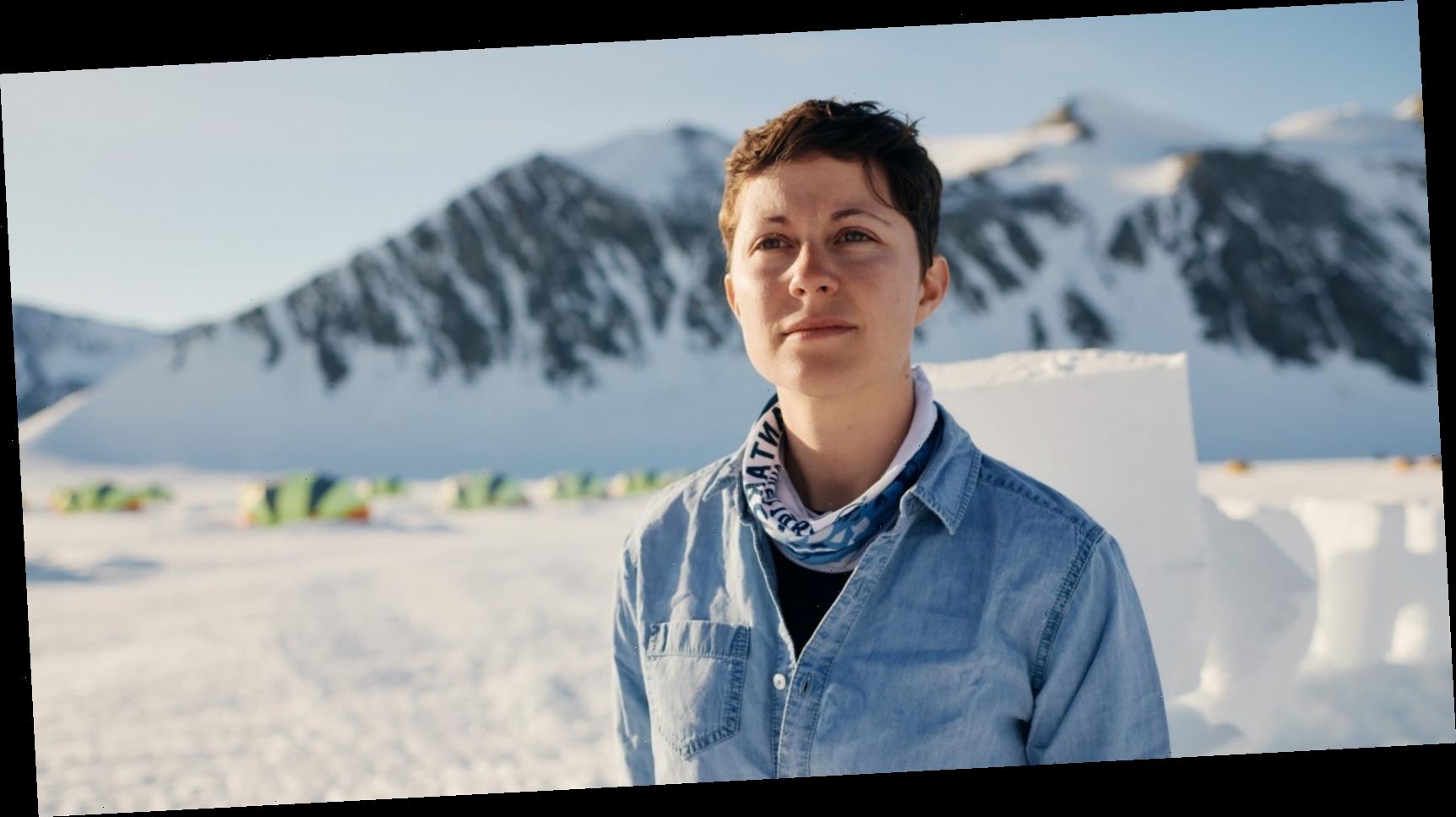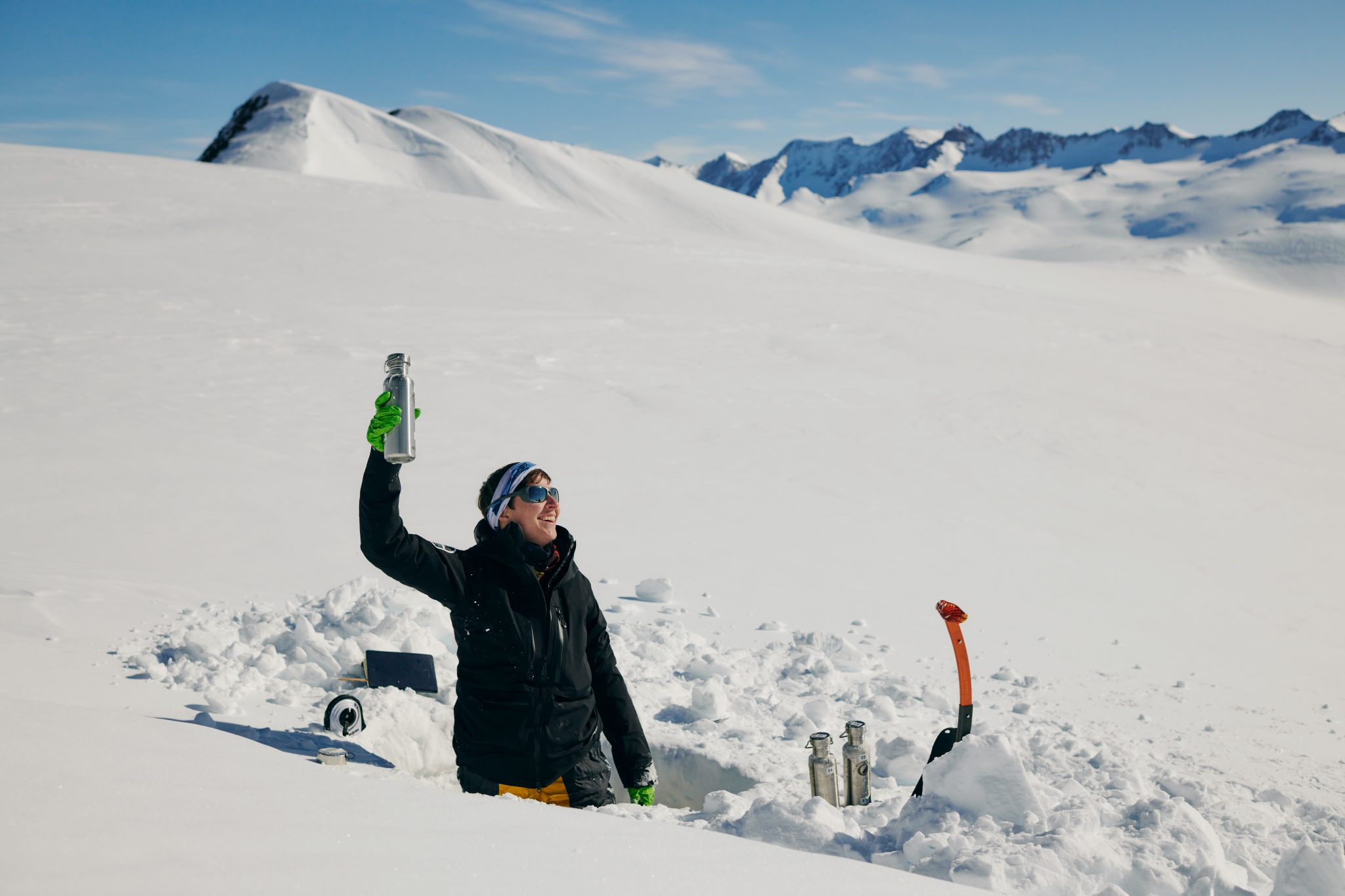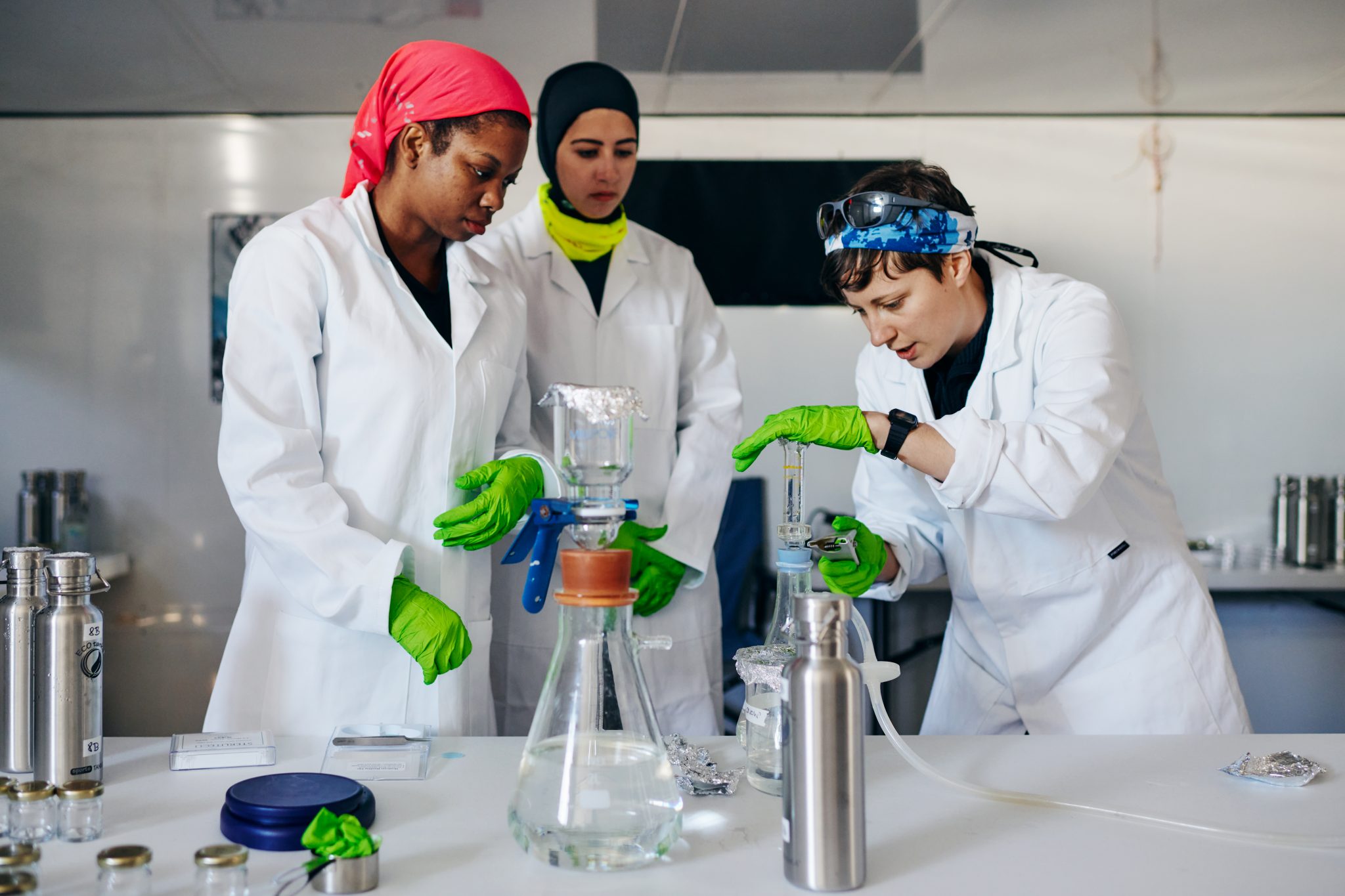Work/Life is Stylist’s regular column about the professional routines of successful women. Here, polar micro plastics researcher, Kirstie Jones-Williams takes us through her one-day diary, from morning latte to lights-out.
Kirstie Jones-Williams, 28, is currently leading a citizen science project in Antarctica. She lives in Cambridge
MY ALARM GOES OFF…
At 5.30am when I’m here in Antarctica. It then takes half an hour to actually get out of my two expedition sleeping bags, into seven or eight layers of clothing and out of the tent. We camp on the ice, which makes it a bit harder to get out of bed than it is back in Cambridge. I listen to something super upbeat to get myself going, maybe some German techno.
I’M RESPONSIBLE FOR…
Five citizen scientists who volunteered for the Airbnb Sabbatical programme. It’s my job to teach them how to collect scientific data in a polar environment – and then lead them out on the ice in order to do so as we seek evidence of microplastics beneath the surface in deep Antarctica. Citizen science is fantastic because it allows us to demystify the process and bring our work closer to the mainstream.
I GOT MY JOB…
After dreaming about working in Antarctica since childhood. As soon as I finished my first degree – environmental geoscience at the University of London – I emailed every polar institute in the world asking if they had any data I could help analyse. My future supervisor picked up on one of those speculative notes, I got my foot in the door and never looked back.
MY TYPICAL DAY…
Begins after a big breakfast in the main tent – usually toast, beans and eggs – when we prepare to head into the field. We carry lots of kit, from crampons and shovels to a satellite phone and Kestrel meter for measuring wind conditions. The main threat we’re facing, apart from cold injuries such as frostbite, is crevasses. So we always rope ourselves together for safety. We’ll normally spend two or three hours digging at a pre-specified site to collect samples, then head back to camp where we have a makeshift lab set up to analyse them.
Everyone has their assigned role, from photographing the samples to uploading the data. Food is a very important part of our day: in extremely cold environments you burn calories at a much faster rate, so we have five meals every day, as well as lots of sugary snacks. Because it’s permanently light in December and January there’s a danger of working too much, so an alarm has to tell me to stop at around 10pm.
MY MOST MEMORABLE WORK MOMENT…
Was the first time I came to Antarctica. We sailed down through the Lemaire Channel on a research vessel and it was so beautiful it bordered on the unreal.
THE WORST PART OF MY JOB…
Is missing friends and family when you’re completely cut off from the rest of the world. There’s no cellular network or wifi down here, only an expensive satellite link. You have to compartmentalise – focus on the job in hand and know that everyone will still be there when you get back – but it can be difficult.
THE BEST PART OF MY JOB…
Is just being here – existing in this incredible place. Particularly when we’re out at remote sites and you know that only a handful of people have ever been in that exact place before, or possibly nobody at all. I love that sense of being an explorer as well as a scientist.
AFTER WORK…
We’ll sit in one of the tents and chat or play cards. As there’s no wifi, we have to engage with each other properly; it’s very refreshing.
My Plan B: landscape designer
I’ve always loved being out in the garden, and in the time between my master’s degree and PhD I worked as a gardener for a while. It’s a very happy place for me to be.
Photography: Yuri Kozyrev
The Air BnB sabbatical saw five members of the public chosen from 140,000 applicants to join a scientific research mission to the heart of Antarctica. To find out what happened, see Airbnb.com/sabbatical
Source: Read Full Article


